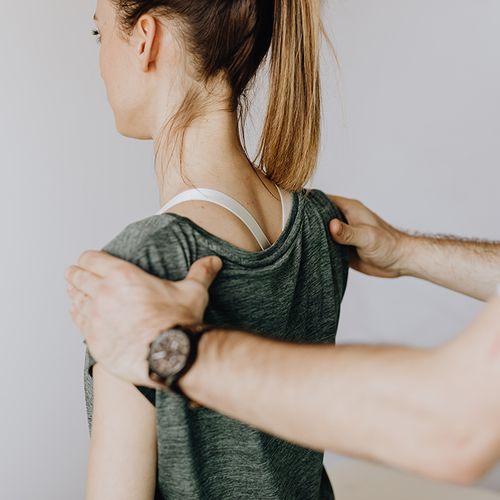We women have lots of joint pain. A study by the Centers for Disease Control and Prevention found that nearly one-third of adult women in the US have some type of chronic joint pain or have been diagnosed with arthritis.
Despite what's commonly believed, it’s not that women have more trouble with their joints than men, but that they tend to have different types of problems.
Example: In general, women's joints tend to be looser than men's joints, particularly the knees and shoulders, which can reduce stability and lead to damaging wear patterns and pain. What you need to know to protect and soothe your joints…
Trouble Spot #1: Knees
Women have inherent difficulties with their patellofemoral joints—or kneecaps—and how they join with the thigh bone. Because women have wider pelvises than men, the hip-to-knee line is less vertical than it is in men, which places more stress across women's knees.
Another reason for knee pain in women is that their soft tissue, including ligaments, is often more lax than that in men.
A third cause of female-specific problems is muscular imbalance. The muscles that support and control the knees include the quadriceps (flout of the thighs), the hamstrings (back of the thighs) and the gluteal (buttocks) muscles. Many women do not have the proper balance of strength among these muscles to support and protect knees.
Weakness in the hamstrings may increase risk for traumatic injuries, such as tears to a ligament when jumping or turning quickly. Weakness in the quadriceps or glutes may predispose a woman to "overuse" problems, such as pain in the kneecap area due to pressure from body weight on the knee.
What to do: Knee pain often can be treated with physical therapy to strengthen the proper muscles, including the quadriceps, hamstrings and gluteals—and followed up with a long-term exercise program incorporating the fundamentals learned in physical therapy. You can't change the alignment of your hips and knees or the laxity of your ligaments, but how strong you are is something you can control with exercise.
Also helpful: Don't wear high heels more often than necessary. They worsen knee pain by increasing pressure behind the kneecap.
For mild-to-moderate arthritis in the knee that doesn't respond well to physical therapy and home exercise, your doctor may want to try viscosupplementation. in which a lubricant based on hyalumnic acid, a substance that occurs naturally in the body, is injected into the knee. This procedure doesn't build back cartilage or bone damaged by injury or arthritis, but it can reduce pain for six months or more and appears to be safe.
Trouble Spot #2: Shoulders
The rotator cuff, a group of muscles and ten-dons that attaches the arm to the shoulder joint and lets the arm rotate up and around, can become irritated and/or inflamed. Continued ir-ritation can cause tendonitis and bursitis.
What to do: A physical therapist can help you strengthen muscles, often using a stretchy exercise band. Its a good idea to fortify the scapulothoracic muscles of the back (they come into play when you squeeze your shoulder blades together).
Smart: Don't carry a heavy purse or other bag on one side of your body—it will promote shoulder and back pain. Instead, distribute weight evenly across your body, such as with a backpack-style purse.
Best of all: A small bag on wheels with an extendable handle. That's what I use to take my patients’ charts between my office and the hospital.
Trouble Spot #3: Thumbs
The base of the thumb, called the carpomem-carpal (CMC) joint, is prone to pain from arthritis in women. We aren't sure why, but it may have something to do with the fact that this joint is smaller in women than in men, yet women must hear the same loads while pinching and grasping as men do. With CMC arthritis, a sim-ple activity like holding a fork can be painful.
What to do: A special splint fitted by an occupational therapist can support your thumb joint and limit the movement of your thumb and wrist. If a splint is going to help, you should start to feel relief within a few days to a week.
If a splint isn't effective, you may need an injection of a steroid into the thumb, which can reduce pain and inflammation. Although most such injections help for only six to eight weeks, that sometimes lets the joint heal enough to stay pain free.
If a steroid injection doesn't solve the problem and arthritis progresses to an advanced stage, you may require one of two kinds of surgery…
- Replacement of damaged portions of the joint with tendon from the wrist. This preserves mobility but usually results in a loss of strength.
- Fusing together of bones in your thumb. This maximizes strength but limits mobility.
Aerobics-Plus
It's important to get aerobic exercise at least several days a week. Besides improving your cardiovascular health, it will help keep your weight down—and excess weight is an enemy of your joints, especially your weight-bearing joints, such as the knees and ankles.
Best: Aerobic activities that also put joints through ranges of motion, such as using an elliptical training machine, swimming and cycling.
However, to slow age-related bone loss, it's vital to do weight-bearing exercise, which stimulate: growth of new bone. The easiest way for most people is to walk a lot. To involve the upper body, use a variety of weight-lifting ma-chines or handheld weights.
